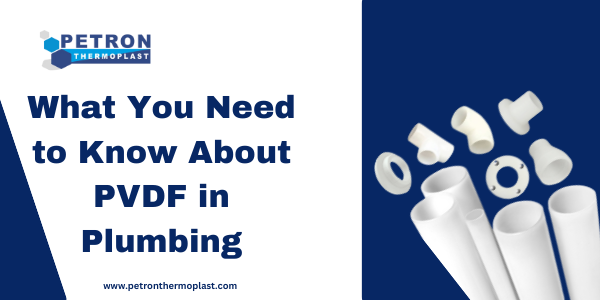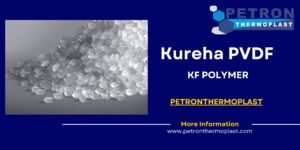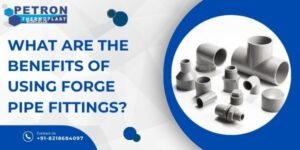Plumbing systems have evolved significantly over the years, with advancements in materials playing a crucial role in enhancing durability, efficiency, and safety. PVDF fittings are among the innovations making waves in the plumbing industry, offering a range of benefits that make them an attractive choice for various applications. In this comprehensive guide, we’ll delve into the intricacies of PVDF (Polyvinylidene fluoride) and why it’s gaining prominence in plumbing systems worldwide.
Understanding PVDF
PVDF, a thermoplastic fluoropolymer, boasts remarkable properties that set it apart from traditional plumbing materials. Its exceptional chemical resistance, high temperature tolerance, and mechanical strength make it ideal for demanding environments where corrosion and abrasion are common challenges. Unlike PVC or CPVC, PVDF is resistant to a broader range of chemicals, including acids, solvents, and halogens, making it suitable for handling aggressive fluids in industrial and commercial settings.
Properties of PVDF
Chemical Resistance: PVDF exhibits unparalleled resistance to a wide array of chemicals, ensuring longevity and reliability in corrosive environments.
Thermal Stability: With a high melting point and excellent thermal stability, PVDF remains structurally intact even under extreme temperature fluctuations, reducing the risk of leaks or failures.
Mechanical Strength: Despite its lightweight nature, PVDF boasts impressive mechanical properties, including high tensile strength and impact resistance, enhancing its durability and performance.
Low Permeability: The inherent low permeability of PVDF minimizes the risk of fluid leakage, providing a secure and reliable plumbing solution.
UV Resistance: Unlike many other plastics, PVDF is highly resistant to UV degradation, making it suitable for outdoor applications without compromising its integrity over time.
Applications of PVDF Fittings
PVDF fittings find widespread use across various industries and plumbing systems, thanks to their versatility and superior performance. Some common applications include:
Chemical Processing: In industries dealing with aggressive chemicals and corrosive fluids, such as pharmaceuticals, petrochemicals, and chemical manufacturing, PVDF fittings ensure safe and reliable fluid handling without the risk of contamination or degradation.
Water Treatment: From municipal water treatment plants to residential filtration systems, PVDF fittings are used for their resistance to chlorine, ozone, and other disinfectants commonly employed in water treatment processes.
Semiconductor Manufacturing: The semiconductor industry relies on ultra-pure water for critical manufacturing processes. PVDF fittings provide the necessary purity and chemical resistance required to maintain stringent quality standards.
Food and Beverage: PVDF fittings are FDA-compliant and safe for use in food and beverage processing, offering resistance to food acids, alcohols, and oils while maintaining product integrity and hygiene.
Advantages of PVDF Fittings
When compared to traditional plumbing materials like metal alloys, PVC, or CPVC, PVDF fittings offer a host of advantages:
Corrosion Resistance: Unlike metal fittings that are prone to corrosion and rust, PVDF fittings remain unaffected by corrosive substances, ensuring long-term reliability and performance.
Chemical Compatibility: With its broad chemical resistance, PVDF can withstand exposure to a wide range of acids, bases, solvents, and oxidizing agents without degradation or leaching harmful substances into the fluid stream.
Durability: PVDF’s exceptional mechanical properties make it highly durable, capable of withstanding high pressures, temperature extremes, and mechanical stress without compromising its structural integrity.
Installation Ease: Compared to heavier metal fittings, PVDF fittings are lightweight and simple to install, which saves labor expenses and installation time. Their compatibility with various joining methods, including solvent cementing and heat fusion, further simplifies the installation process.
Low Maintenance: Once installed, PVDF plumbing systems require minimal maintenance, as they are inherently resistant to scaling, fouling, and biological growth, reducing downtime and operational costs over the system’s lifespan.
Considerations for PVDF Plumbing Systems
While PVDF offers numerous advantages, there are some factors to consider when incorporating it into plumbing systems:
Temperature Limitations: While PVDF exhibits excellent thermal stability, it has temperature limitations that should be taken into account. Consult manufacturer specifications to ensure compatibility with the intended operating temperatures.
Pressure Ratings: Be mindful of the pressure ratings of PVDF fittings and pipes, as exceeding these limits can compromise the integrity of the system and lead to failures.
Chemical Compatibility: While PVDF is highly resistant to a wide range of chemicals, it’s essential to verify compatibility with specific substances present in the application to prevent unexpected reactions or degradation over time.
UV Exposure: Although PVDF is UV-resistant, prolonged exposure to sunlight can still cause degradation over time. Consider using UV-resistant coatings or shielding for outdoor applications to prolong the lifespan of PVDF components.
Installation and Maintenance Tips
Proper installation and maintenance are crucial for maximizing the performance and longevity of PVDF plumbing systems. Here are some essential tips to keep in mind:
Follow Manufacturer Guidelines: Adhere to the manufacturer’s installation instructions and recommended practices to ensure proper joint preparation, solvent selection, and fusion parameters for PVDF fittings.
Inspect Regularly: Periodically inspect PVDF fittings and pipes for signs of damage, leaks, or degradation. Early detection of issues allows for timely repairs or replacements, minimizing downtime and potential damage.
Prevent Contamination: Keep PVDF plumbing systems free from debris, contaminants, and foreign substances that may compromise fluid purity or cause blockages. Use appropriate filtration and cleaning procedures as needed.
Avoid Mechanical Stress: Avoid excessive bending, twisting, or impact on PVDF fittings and pipes during installation or maintenance to prevent stress cracking or structural damage.
Monitor Operating Conditions: Monitor operating conditions such as temperature, pressure, and chemical exposure to ensure they remain within the specified limits for PVDF materials. Implement controls or safeguards as necessary to prevent system failures.
Emerging Trends and Future Outlook
As the plumbing industry continues to evolve, several emerging trends are shaping the future of PVDF applications:
- Smart Plumbing Systems: Integrating PVDF fittings with IoT (Internet of Things) technology allows for real-time monitoring of plumbing systems, enabling predictive maintenance, leak detection, and remote control for enhanced efficiency and cost savings.
- Sustainable Solutions: With growing concerns about environmental impact, there’s a rising demand for sustainable plumbing materials. PVDF, with its durability, chemical resistance, and recyclability, aligns well with sustainability goals, making it an attractive choice for eco-conscious projects.
- Customization and 3D Printing: Advances in manufacturing techniques, such as 3D printing, offer opportunities for customized PVDF fittings tailored to specific plumbing requirements. This level of precision and flexibility opens doors to innovative designs and optimized performance.
- Integration with Alternative Energy Sources: As renewable energy sources gain traction, PVDF can play a role in plumbing systems for solar water heaters, geothermal heat pumps, and other sustainable energy solutions, contributing to energy efficiency and carbon footprint reduction.
Regulatory Compliance and Standards
Ensuring compliance with relevant regulations and standards is paramount when specifying and installing PVDF plumbing systems. Key considerations include:
- NSF/ANSI Standards: Look for PVDF fittings and components that meet NSF/ANSI standards for drinking water safety and chemical resistance, ensuring compliance with regulatory requirements and industry best practices.
- ASTM Specifications: Verify that PVDF materials conform to ASTM specifications for dimensional tolerances, mechanical properties, and chemical resistance, providing assurance of quality and performance.
- Local Building Codes: Familiarize yourself with local building codes and regulations governing the use of PVDF in plumbing applications, including permitted uses, installation requirements, and material approvals.
By adhering to established standards and regulations, plumbing professionals can ensure the safety, reliability, and compliance of PVDF plumbing systems, mitigating risks and ensuring peace of mind for project stakeholders.
Conclusion
In conclusion, PVDF represents a game-changing material in the field of plumbing, offering a unique combination of chemical resistance, durability, and versatility that address the challenges of modern fluid handling applications. From corrosive environments in industrial settings to potable water systems in residential and commercial buildings, PVDF fittings provide a reliable solution that exceeds the limitations of traditional plumbing materials.
By understanding the properties, applications, and considerations associated with PVDF, plumbing professionals can leverage its potential to create robust, efficient, and sustainable plumbing systems that meet the evolving needs of diverse industries. With ongoing advancements in technology, manufacturing, and regulatory standards, the future of PVDF in plumbing looks promising, paving the way for safer, more reliable, and environmentally friendly fluid handling solutions.
As we embrace the possibilities offered by PVDF, it’s essential to remain vigilant, continuously learning, adapting, and innovating to unlock its full potential and address the challenges of tomorrow’s plumbing landscape. By embracing PVDF and staying ahead of the curve, we can build a more resilient, efficient, and sustainable world for generations to come.




